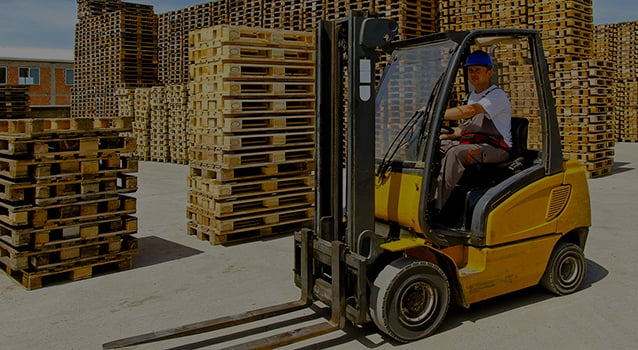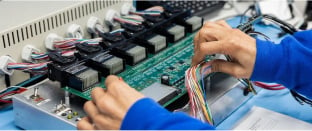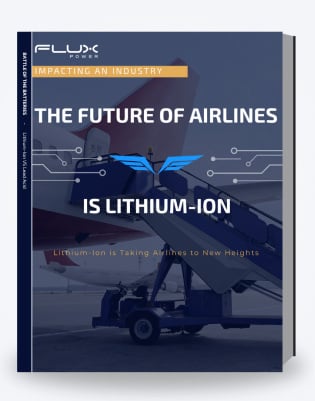When purchasing a battery for an electric forklift, one of the most important features you’ll likely consider is price.

The purchase price on a battery, however, is never its true cost. Just ask a major equipment manufacturer that replaced the lead-acid batteries used to power its fleet of 80 Class I & II trucks with Flux Power’s lithium-ion batteries (LiFT Packs).
They are on their way to saving more than $1 million over the course of a year!
A newer, cleaner technology, lithium-ion batteries traditionally have a higher upfront purchase price than lead-acid batteries. But, as this major equipment manufacturer discovered, there are many factors that influence the true cost of a battery, and the purchase price is only one factor.
Here’s why...
Labor Costs Continue To Add Up With Lead-Acid
Labor costs alone significantly contributed to the savings experienced by this major equipment manufacturer. Directly impacting labor costs was average battery run times and the process by which they are charged.
Lead-acid batteries generally last between 5 and 6 hours, whereas lithium-ion batteries have a run time of between 7 and 8 hours.
Lead-acid batteries are filled with electrolyte (sulfuric acid and water). This type of battery generates electricity through a chemical reaction of lead plates and sulfuric acid. The process by which they are charged looks like this:
- The forklift operator must drive the forklift to a designated battery charging room.
- Trained personnel must remove the battery from the forklift using special handling equipment because of the weight.
- The battery is then placed on a rack where it will be charged.
- The battery must charge for approximately 8 hours. Before, during and after this process, electrolyte levels should be monitored to ensure the levels do not spill over.
- The lead-acid battery must either stay there or be removed from the charging station using special equipment and transported to another designated room to “cool” for an additional 8 hours before returning to service.
- Before placing the battery back in service, personnel must check the electrolyte level and refill it with distilled or deionized water, if necessary or the chemical process will degrade and the battery will suffer an early failure.
How They Saved Money
In the case of this major equipment manufacturer, they were spending approximately $4,800 every day on lost productivity associated with the removal and re-installation of batteries for charging.
They discovered that their lead-acid batteries needed to be swapped out twice per shift. The replacement process took the forklift out of service for approximately 15 minutes for each battery exchange.
Lost Productivity Per Day
(.25 hours/change) x (2 changes/shift) x (3 shifts/day) x ($40/hour) x (80 trucks) = $4,800/day
This equipment manufacturer operated on average 6 days per week.
6 days/week x 52 weeks = 312 operational days/year
Lost Productivity Per Year
The company was spending nearly $1.5 million each year simply swapping out lead-acid batteries on its fleet of 80 class I & II trucks.
$4,800/day x 312 operational days = $1,497,600
Yes, you’re reading that correctly!
After switching the power source to Flux Power’s lithium-ion batteries, they immediately saw a reduction in downtime for forklifts.
This is because Flux Power’s LiFT Packs:
- Remain in the lift truck during charging
- Are plugged directly into a charger
- Do not require transport to a separate charging and cooldown room
- Do not require maintenance time for refilling the battery with distilled or deionized water
- Can be opportunity charged during times that preserve workflow and save labor costs, such as in between shifts and during staff breaks.
Bottom Line
By examining the downtime associated with using lead-acid batteries versus Flux Power’s lithium-ion batteries, a major equipment manufacturer began to save more than $1 million annually.
And, that doesn’t even take into consideration other factors that influence the true cost of using lead-acid batteries, including:
- Allocating warehouse space needed to safely charge and store batteries during cool down periods
- Safety risks that could result in costly downtime, loss of equipment and reimbursement expenses to an injured worker
When it comes time to replace aging batteries in your fleet, it pays to look beyond the upfront purchase price to determine the true costs associated with downtime due to lead-acid battery swaps.












